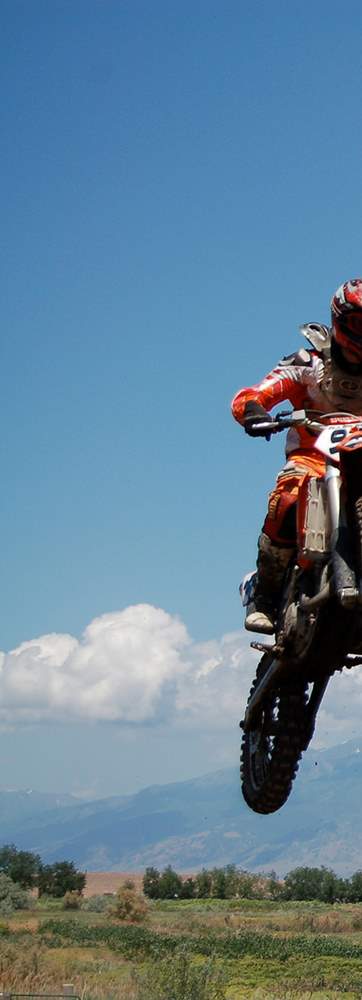
Jordan River OHV State Recreation Area
Learn to Ride and Ride Better
The Jordan River OHV Park occupies something of a no-man's land near the junction of the Salt Lake Belt Route, Interstate 215, and the Legacy Parkway. Here, I-215 curves east and terminates on I-15. A corridor of heavy industry separates the two. In the distance, the capital city's skyscrapers peak out over the scene, faintly visible through the atmosphere.
The interstate traffic to the west blends together into a hum, then all but disappears into the background. What is audible at this moment is a low, persistent rumbling. One of the Wolverine 450s is running. Mike Thomas had pulled it out of the shed and given it a jump that morning. He hoped to get a good charge on the battery. It was time to ride.
Mike Thomas is the OHV Volunteer Coordinator for Utah State Parks, part of the Department of Natural Resources. He has brought several of the agency's machines to the Jordan River Off-Highway Vehicle Park for a safety demonstration. There's a large canvas bag of helmets and a series of orange cones set up in the dirt. If you haven't heard of the acronym SIPDE by this point, you soon will. (Think of defensive driving: Scan, Identify, Predict, Decide, and Execute.)
For now, Thomas encourages riders to feel what the ATV wants to do, and go with the machine. There's a lot more to it than that, but then the idea speaks directly to one of the reasons why people like riding ATVs so much: you can really work with it out on the trail, and the openness of the ride provides for a more intimate outdoor experience. Most importantly, getting familiar with a machine in a controlled situation prevents surprises out in the backcountry.
Of course, expert riders come to hone their own skill set too. There are tracks and times for just about every type of rider.
Coordinates: 40.825417,-111.945111
Who It's For
This OHV destination is perfect for digging into the dirt. Four tracks, including two motocross (MX) tracks for off-highway motorcyclists, and two dual-purpose OHM and ATV tracks fill the space. For this densely populated part of the Wasatch Front, it's a perfect chance to get the toys out for some quick off-road action. While it's no Paiute or Arapeen — that is to say, it's not thousands of miles of well-maintained high-country trails systems like Central Utah boasts — it tides riders over. Plus, the facility offers OHV education courses, especially for youth ages 8-16 — it's a required course for the age group to ride at the park or any of Utah's public lands. There are also sporadic spectator events.
Fees, Permits and Ride On!
A day-use entry fee is required for Jordan River OHV State Recreation Area, you can purchase in-person or online. The Annual Utah State Park Pass is not accepted for entry. Learn about Utah vehicle registration and permits and OHV regulations.
Tread Lightly! created the Ride On! message to unite the U.S. Forest Service, Bureau of Land Management, Utah Division of State Parks and Recreation, Utah Division of Wildlife Resources, and the Utah School and Institutional Trust Lands Administration in an effort to help riders choose designated routes and help protect natural resources.
Nobody Is Invincible
Trails come in many forms. There are the wide-open dunes of Coral Pink Sand Dunes and Sand Hollow state parks, as well as the unforgettable 700-foot wall of sand at Little Saraha. There are the hundreds of miles of high-alpine paths carved by the Paiute, Arapeen and Gooseberry trail systems. In winter, you might encounter the groomed snow-packed trails of Wasatch Mountain State Park. These are incredible resources and they are attracting a lot of new riders.
Growth of OHV ridership sport requires rider responsibility, including properly registering machines, learning and obeying OHV safety laws and rules, and sharing trails with other user groups including equestrians, hikers, mountain bikers, skiers and snowshoers. Learn more from Utah State Parks' Off-highway Vehicle Program.
